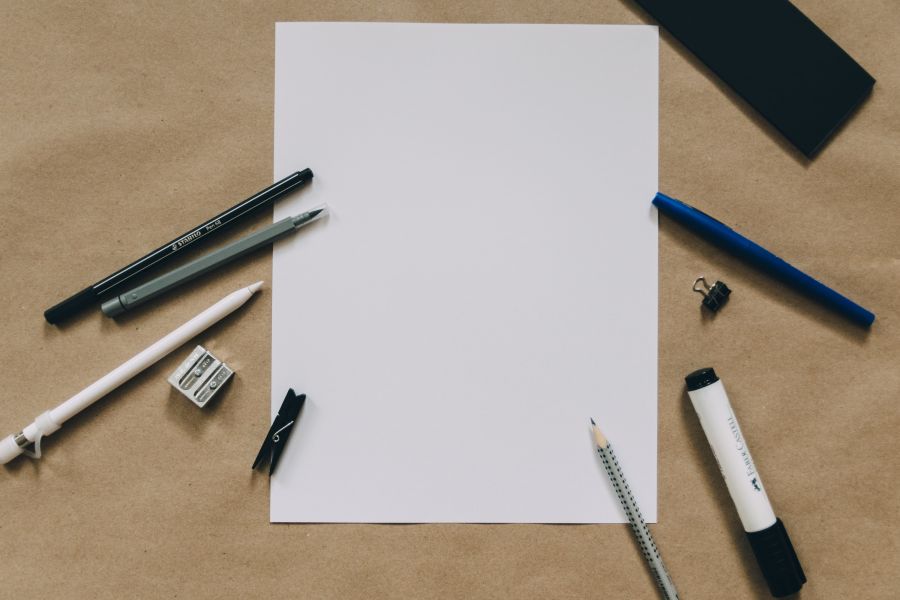Artful Aging年岁在长创造力不减英语美文
By Karen Springen and Sam Seibert
Don’t ever assume your best work is behind you. Creativity often peaks in our later years.
On his desk at the University of Kentucky, Prof. David Snowdon displays an artistic treasure: a ceramic sculpture of Santa Claus perched atop a John Deere tractor. The artist, Sister Esther Boor, gave it to him before her death in 2002. At 107, she was the oldest participant in the research project Snowdon directs, the university’s groundbreaking Num Study. Since its start in 1986, the program has investigated the relationship between aging and Alzheimer’s disease by tracking the health of 678 Roman Catholic nuns over 70. Sister Esther took up ceramics after she retired at 97. Snowdon cherishes her reply on first being asked to join the project: “She said she was too busy to be in a study of old people.”
Snowdon still isn’t sure what kept Sister Esther so vibrant for so many years. But the secret of her kind of sustained creative energy is an increasingly valuable one. People are living longer lives than ever before. What matters now is to make those extra years more fulfilling – and it can be done. Researchers who investigate longevity are discovering that old age can be a peak period for creativity. “We always think of winding down in old age,” says Judith Salerno, deputy director of the National Institute on Aging. “We need to begin thinking about late life as an opportunity for people to explore.” Oldsters may not be a quick or prolific as they were in their 20s, but experience is a rich resource. Those who learn to tap it as they grow older can accomplish amazing things and sometimes develop talents they never recognized.
There’s no shortage of precedents, great and small. Some have been classic late bloomers. Laura Ingalls Wilder was in her 50s and 60s when she wrote her “Little House” books. Anna (Grandma Moses) Robertson sold her first paintings to a collector at 79 – and kept at it for the next two decades. Others went on blooming long after their expected season. I.M. Pei designed Cleveland’s Rock and Roll Hall of Fame + Museum in his 70s, and Frank Lloyd Wright died at 91 building his final monument, the Guggenheim Museum. Still others, like Franz Joseph Haydn and Ludwig von Beethoven, found way to redouble their inspiration as they entered their final years.
No one denies that age has costs. A healthy adult’s brain contains approximately 100 billion neurons (nerve cells), some of which die off with age. “For all of us, there’s undoubtedly a very slow degeneration,” says neurologist Arnold Scheibel, turning 82 on Jan. 18 and still hard at work at UCLA. The loss is drastic in people with Alzheimer’s, but no big deal in health individuals. And other parts of the brain actually keep developing as we get older – particularly if we give them plenty of exercise. “Over time, and especially with challenge, brain cells sprout new projections called dendrites,” says Dr. Gene Cohen, author of “The Creative Age” and director of the Center on Aging, Health and Humanities at George Washington University. Dendrites flourish in the brain’s critical information-processing sector throughout our 50s, 60s and 70s.
Despite the gain in dendrites, mental processes tend to lag. “Your reaction time slows down with age,” says Dean Keith Simonton, a psychology professor at the University of California, Davis. “Forget it if you want to take up tennis in your 50s and become a world-class player. But creating things is not a speed test.” Still, some mental pursuits do make it easier than others for young minds to excel. “Different fields require different amounts of expertise,” says Simonton. “In fields that are very abstract and very finite, like higher mathematics, you can make a contribution earlier.”
For those who like scientific definitions, creativity is an exasperatingly slippery concept. Scheibel explains the process as “the putting together of familiar information in an unusual way.” Nevertheless, the seemingly simple idea covers a range of mental tasks, all of them valuable. Researchers sometimes measure creativity by seeing how many different ways a subject can devise to use a paper clip, say, or a toothpick. “If you look at people’s performance on those tests, it tends to increase until around 40 years old, and then it starts to decline,” says Simonton. “But if you look at something called practical creativity – solving everyday problems you have in life – that peaks later.” Sometimes much later, as in the case of Ben Franklin, who at 78 invented the world’s first bifocals for himself.
No one has figured out yet exactly how the brain handles these feats. At UCLA, magnetic resonance imaging (MRI) may be giving at least some clues into the nature of sudden insights. Subjects are asked to solve simple anagrams. The answers may come in a flash (“Aha!”) or slowly, by methodical examination of the different possibilities. The Aha! Answers are associated with bursts of activity in the brain’s right temporal lobe. “This region seems to connect information of various kinds,” says neurologist Marco Iacoboni, one of the scientists conducting the study. And making fresh connections is an essential part of creativity.
But fireworks aren’t everything. Sometimes inspiration comes slowly and quietly. Depending on the idea, Cohen says, different parts of the brain may dominate. The right hemisphere is typically more involved in visual tasks, and the left brain does more verbal work. Many creative concepts need both halves, as well as the hippocampus, a part of the brain that specializes in information processing and recall. Cohen suspects that these various parts of the brain are at high alert during periods of creative inspiration.
Advancing years can actually help that process along. The kids leave home, and a pension can make it easier to quit your day job. “There’s a freedom in being older,” says veteran radio producer Connie Goldman, 73, author of “Secrets of Becoming a Late Bloomer” and “The Ageless Spirit.” “Teenagers like to all be alike and all dress alike. As we get older, we’re more individuals. We’re ready to be who we are.” Salerno agrees. “In a sense there’s less to lose by trying things in late life,” she says. “You don’t have to be bothered with what other people think.” Growing up can be a relief. Gail Carson Levine was closing in on 50 when she published her first book, “Ella Enchanted,” earning one of the most prestigious prizes in children’s literature, a Newbery Honor. Now 57, she doubts she could have written such a life-affirming book in her younger years. “Adolescents can be very dark,” she says. “That wears off only slowly.”
Age doesn’t always bring wisdom. “If you want to be a rigid old coot, you can do it,” says University of Utah psychologist Monisha Pasupathi. But it’s far from inevitable, she adds: “There’s this myth that old people are rigid.” And a growing body of research suggests that creative activity can actually help keep you healthy. For the last three years Cohen has been conducting a study of 300 senior citizens. Half are participating in community-based arts programs while the others serve as a control group. The members of the arts group make fewer visits to the doctor, fall less often, use less medication and are less likely to be depressed than the controls. Why? “You have a personal sense of mastery,” says Cohen. Other studies have shown similar results.
Scientists are gradually unlocking the secrets of staying mentally vigorous. Marian Diamond, a 78-year-old professor of integrative biology at UC Berkeley, lists five essentials: diet, exercise, challenge, novelty and love. Nutrition’s importance is obvious. Exercise is likewise vital to the cardiovascular and respiratory systems that keep the brain going. Experiments show that lab rats’ brains grow larger and sharper when they get new mazes to solve and a variety of toys to play with. And they live longer – as long as 900 days instead of 600 days – if the scientist (or a graduate assistant) keeps them stimulated. People ask Diamond why she hasn’t retired. “Why should I?” she answers. This year, 736 students signed up for her general human anatomy class.
Chuck Close doesn’t need to be told about challenges. One of the acknowledged masters of contemporary American art at 64, he worries about falling into a rut. “Ease is the greatest enemy of the artist –when you get good at something and just keep cranking it out,” he says. “The hard thing is to keep yourself in a little bit of trouble.” He might seem to have had more trouble than anyone needs without looking for it. At 50 he was hospitalized with a blood clot that initially left him paralyzed from the neck down. In effect he had to learn his craft all over. “I don’t think I’m doing work drastically different than if this hadn’t happened to me,” he says. “I work very slowly. I make three paintings a year.” He admires the way Matisse, Picasso and de Kooning continued to evolve as they grew older. “Otherwise you have to be lucky and die early, like Pollock.” What about his own art? “I hope I’m making some of my best work now, but I’m not done yet,” he says. “Call me back when I’m 89.” It’s a date.
相关文章
我用情书谢谢你美文故事2023-07-17 02:11:57
浪漫邂逅与你们相遇的美文2023-07-16 08:09:26
品舌尖上的中国悟旅途中的人生美文2023-07-19 08:02:51
美文欣赏:品味父爱2023-07-12 13:52:42
属于秋天的色彩美文2023-07-12 07:38:00
母亲,我只是想和你多待一会儿的感恩励志美文2023-07-14 03:16:52
上海对外经贸大学和北京交通大学(威海校区)对比哪个好(排名分数线区2024-05-05 08:38:37
河北高考排名237950名物理能上什么大学(能报哪些学校)2024-05-05 08:32:42
山东城市建设职业学院在山东招生人数和招生计划 多少人2024-05-05 08:28:35
上海农林职业技术学院在湖南招生人数和招生计划 多少人2024-05-05 08:26:11
吉林农业科技学院在湖南招生人数和招生计划 多少人2024-05-05 08:22:38
安徽高考多少分可以上云南经贸外事职业学院 招生人数和最低分2024-05-05 08:18:11
我愿给你举世的温柔美文欣赏2023-07-21 19:32:13
美文欣赏:中彩那天2023-07-14 09:23:27
飘自比利牛斯的圣歌美文2023-07-08 12:19:28





